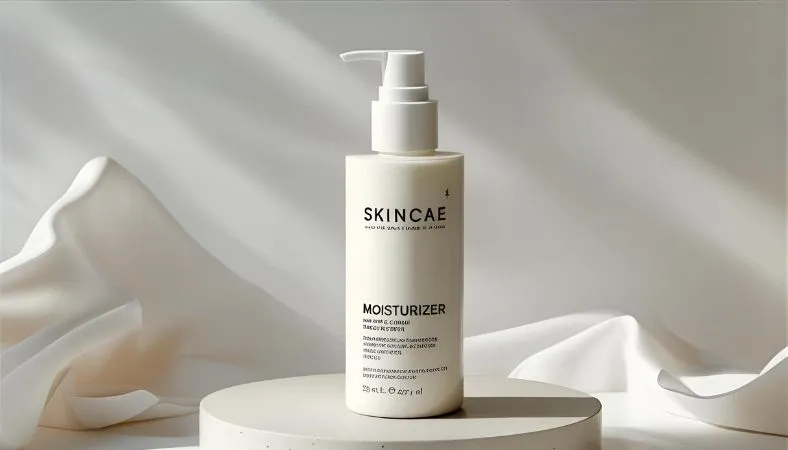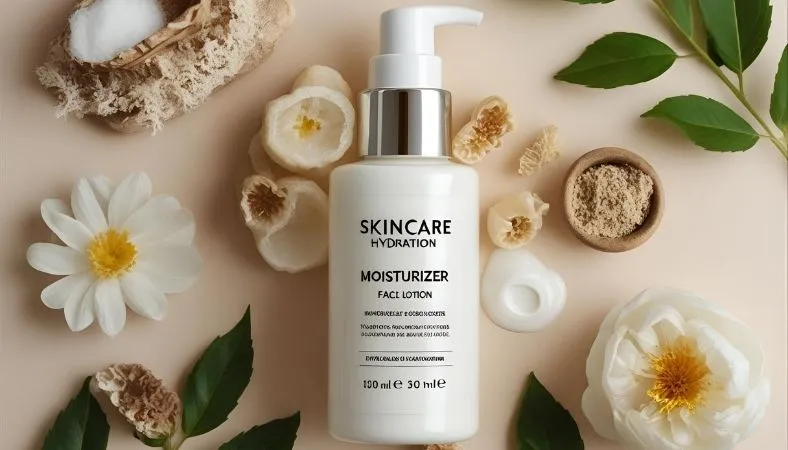Key Takeaways
- Recommended Users: Persons with oily, acne-prone, or combination skin types will find oil free moisturiser beneficial. Those living in hot and humid regions, as well as makeup users who prefer a lightweight feel under it, would also find it helpful.
- How it works: Instead of oils, these products use humectants like hyaluronic acid and glycerin to absorb water from the environment, providing hydration without the added grease and pore clogging.
- What to look for: Look for niacinamide to regulate oil production, ceramides to maintain the protective skin barrier, and for those with acne-prone skin, salicylic acid.
- Application is key: Pilling can be avoided if a pea-sized amount is spread on clean, moist skin and waiting a few moments before SPF or makeup is applied.
- “Oil-free” isn’t everything: This expression has no limits. Always look at the complete list of ingredients to check that it is not comedogenic and does not contain skin irritants of your choice.
Never Grease Your Skin Again: The Complete Manual on Oil-Free Moisturisers
If the never-ending battle of controlling a shiny T-zone or dealing with greasy “moisturisers” is your struggle, you found the right guide. Oil-free moisturisers can feel like a blessing for those with oily and acne-prone skin, but what are they, and how to choose the right one?
This guide tackles everything for you.
We will discuss the functions of an oil-free moisturiser, who it is intended for, and how to choose the right one. Let’s start making your skin feel hydrated, balanced, fresh, and not shiny.
What Is an Oil-Free Moisturiser
Essentially, an oil-free moisturiser is a type of skin hydrator that does not contain oils from plants, minerals, or animals. These types of moisturisers will not provide adequate skin hydration for your skin and typically contain water.
 Going Beyond the Basics: From Water-Based Gels to Lightweight Lotions
Going Beyond the Basics: From Water-Based Gels to Lightweight Lotions
In most instances, these types of moisturisers will take the form of a gel or a very lightweight lotion. Imagine a water cream that is cool and refreshing, soaking into your skin. The water cream provides hydration without a heavy or sticky feeling, which is especially soothing during the day or in the summer.
The Core Job: Their Methods of Hydration Yet Keeping Dry Skin Appearing Matte
If there are no oils used, what kind of moisturisers are employed? These are clever, called humectants, like glycerin and hyaluronic acid. Picture these ingredients in your head as small moisture superheroes that haul water from the air and the deeper layers of your skin, bringing it to the surface. This not only plumps your skin, but also keeps it nourished from the inner layers, sans grease.
5 Skin Benefits from Switching to a Formula with No Oils
Absolutely no oils in the formulas, which benefit the skin significantly. Here’s what we noticed is the most helpful.
Provides Hydration without Oily Residue
Without a doubt, the texture is more welcoming and appealing to most. With no oils in the formulas, skin is hydrated without delay and with no burden. Moisture is more easily accessible without the sticky, dense sensation that comes with the cream.
Controls Excess Oil And Shine
The way to combat oily skin is to hydrate it. Ironically, dehydrated skin ends up producing more oil. Oil-free moisturisers keep your skin hydrated without introducing excess oil, maintaining a balance between hydration, oil secretion, and controlling midday shine.
Won’t Clog Pores
The oil-free moisturisers not only help one combat oily skin but help acne-prone skin. Because oil-free moisturisers are often non-comedogenic, they are specially designed not to clog skin pores, and therefore result in fewer breakouts.
Provides a Makeup Base that is Smooth and Matte
The finish is often matte and, for the most part, oil-free moisturisers absorb well. Because of these qualities, they make for an excellent base for makeup and other products, like foundation. This can aid in the effortless application and durability of your makeup, especially in terms of avoiding pilling or sliding around.
Usually Soothes Acne and Sensitive Skin
Sensitive skin is easier to manage, and oil-free skin moisturisers are made with these specific concerns in mind. These moisturisers often have niacinamide or green tea, which can provide softness as well as relief from redness, so it is an excellent aid for those with active breakouts.
Who Should Consider Using an Oil-Free Moisturiser? (And Who Would Not)
Any person is free to use an oil-free moisturiser, but such products are especially beneficial for specific scenarios and skin types.
The Ideal Candidates: Oily and Combination Skin Types
If you have an oily T-zone with drier cheeks (combination skin), an oil-free moisturiser is perfect for you. It helps in hydrating the drier areas without overloading the oily parts.
A Breakthrough for Acne and Sensitive Skin
For many struggling with breakouts, avoiding any pore-clogging fillers is essential. Most oil-free options are non-comedogenic, making them a safer bet in keeping pores clear. These oil-free options are gentler, ensuring they do not add to any irritations.
Dry Skin Types and the Benefits of Oil-Free Products
Even with dry skin, an oil-free lotion could be helpful. In warm and humid summer months, thick creams can feel overly heavy. Hydration in an oil-free gel can be entirely weightless. Alternatively, you can use oil-free gel during the day and use richer, oil-based cream at night.
The Impact of your Geography: Why Hot Areas Require Oil-Free Products
In a humid climate, there is a lot of moisture already available, so heavy moisturisers can become sticky and sweat straight off the skin.
An oil-free gel feels noticeably lighter and more breathable on the skin.
The Science of Hydration: How These Moisturisers Work
We can assure you, there is no magic involved. Let’s take a closer look at the key components that contribute to these products’ remarkable effectiveness.
The Power of Humectants: Meet Hyaluronic Acid and Glycerin
Hyaluronic Acid is a superstar hydrator. Glycerin is another powerful humectant that work similarly to pull water to the skin and keep it soft, supple, and moisturised.
What Does “Oil-Free” Mean (And What It Doesn’t)
“Oil-Free” indicates that the products do not contain any oil; however ,it remains to be seen what other ingredients the oil-free products contain that may still clog the pores.
Why “Non-Comedogenic” Is Likely the Most Important Term for You
“Non-Comedogenic” implies that the product has been made and tested not to block the pores. Suppose he or she has skin that easily gets the whiteheads or acne, the above is what lto ook for most. It is possible to be oil-free and non-comedogenic at the same time—some facial oils are non-comedogenic products.
Our Best Selected Oil-Free Moisturiser for 2025
For the skin-care enthusiasts looking for the best oil-free moisturisers, to make the search easier ya the market is flooded with the best oil-free moisturisers, these are the best consistently recommended.
Best Overall: La Roche-Posay Toleriane Double Repair Matte Moisturiser
This product has a dermatologist’s approval for a reason. It contains ceramides and niacinamide that help both hydrate and repair the skin barrier while also providing a matte finish that controls shine for hours.
Best Budget-Friendly: Neutrogena Hydro Boost Water Gel
A classic found in literally every drugstore. This gel-cream gives a refreshing sensation while also moisturising intensely because of the hyaluronic acid. It is very light in weight and absorbs in seconds. It also moisturises the skin without any greasiness.
Best for Acne-Prone Skin: CeraVe PM Facial Moisturising Lotion
This lotion is a favourite for people who suffer from acne. Though it is meant for the PM, the oil-free, non-comedogenic nature of the product means that it can also be used during the day. It has niacinamide and ceramides that help with calming the inflammation while also helping with the skin barrier, all in a very lightweight product.
Best for Sensitive Skin: Clinique Moisture Surge 100H Auto-Replenishing Hydrator
This gel-cream hydrator is a drink of water for the face. Clinique is best known for its allergy-tested, fragrance-free formulations, and this product is no different. It also contains generous amounts of hyaluronic acid and aloe that hydrate the skin, which makes it suitable for easily irritated skin.
Best with SPF: Kiehl’s Ultra Facial Oil-Free Lotion SPF 30
If you’re on the search for a daily moisturiser with SPF, look no more!!! Kiehl’s Ultra Facial Oil-Free Lotion SPF 30 has you covered! Broad-spectrum SPF 30 guarantees a lightweight, shine-free moisturiser that protects your skin from harmful rays.
Strategies for Perfect Results Using Your Oil-Free Moisturiser
Most people don’t get the best results from their products simply due to improper usage.
The Right Amount: Why a Pea-Sized Dollop is Enough
Applying too much moisturiser is a common offender that leads to stale skin, a feeling of tackiness, and the dreaded pilling. To help with this problem, stick with a pea-sized amount that keeps your skin feeling fresh. It’s more than enough for your face to look glowing.
The Pilling Problem: Tips to Stop Your Moisturiser from Balling Up
To get rid of the pilling problem, make sure that you apply oil-free moisturiser on clean skin. Always allow time for your serum to absorb before skin. Pilling results from skin damage caused by the moisturiser’s composition and the way the product is rubbed on the skin. Pilling results from skin damage caused by the moisturiser’s composition and the way the product is rubbed on the skin.
Skilful Layering: Placement of Your Serums, Sunscreen, and Sunscreen
The application of skincare products is commonly made from the thinnest to the thickest in consistency. Thus, your oil-free moisturiser is to be applied after any water-based serums and before sunscreen. Do remember, sunscreens are to be used as the last step in your morning skincare routine.
Debunking Skin Care Myths for Oily Skin: Moisturising
There is a wealth of information, and some of it is bad. Let’s set the record straight on a few of them.
Myth: “Oily Skin Does Not Need a Moisturiser
This is one of the most commonly believed myths. As discussed, moisturiser is skipped, the body will try to balance the dehydration by producing more oil, causing the skin to turn oilier.
Myth: “Oil-free moisturisers will dry out my skin
A well-balanced oil-free moisturiser is designed for hydration. They include a well-balanced blend of hydrating and water-binding ingredients. If your skin feels tight and dry, it could be due to a moisturiser that lacks humectants or it could be a result of your skincare routine containing too many drying products.
Myth: “All gel creams are oil-free.
Gel creams containing oil are few in number. However, those few exist. While texture gives a good hint, checking the label and the ingredients is the only way to be certain.
Achieving Skin Balance and Hydration
Discovering the perfect moisturiser can feel like a quest, but for most people, an oil-free formula leads to happier, balanced skin. It’s all about providing the hydration your skin thirsts for, without problem-causing ingredients.
- First, determine the skin concern you want to focus on, be it shine, breakouts, or even inflammation.
- Select a product with a formulation that addresses that issue.
- Consider applying it to damp skin to better absorb and help with moisture retention. Your skin will thank you!
Frequently Asked Questions (FAQ)
What is the oil-free moisturiser with the most hydration?
The “best” one depends on your skin. Popular choices include Neutrogena’s Hydro Boost for lightweight hydration and La Roche-Posay’s Double Repair Matte Moisturiser for controlling shine. Look for one that targets your specific needs, like acne or sensitivity.
What is an oil-free moisturiser?
It is a water-based hydrator that uses ingredients like hyaluronic acid and glycerin to moisturise your skin. Oil-free moisturiser provides hydration without the grease for a lightweight, smooth feel.
Do Cetaphil moisturisers have oil in them?
Cetaphil has a couple of oil-free products, such as the Daily Oil-Free Hydrating Lotion and Daily Facial Moisturiser with SPF 35. But oil-free products are not the only options available in Cetaphil, as some have oil in them. Be sure to check the product label before purchasing.
Do CeraVe moisturisers have oils in them?
Most CeraVe moisturisers are oil-free, and that is the reason why so many people with oily and acne-prone skin prefer them. Both The PM Facial Moisturising Lotion and Ultra-Light Moisturising Lotion are excellent oil-free options.
How do I check if my moisturiser is oil-free?
Simply check the front of the bottle. Look for the words “oil-free.” For a sure bet, scan the ingredient list. If you do not find “mineral oil” or other plant oils, you are in the clear.
Is CeraVe nice for oily skin?
Absolutely. CeraVe is a good pick for oily skin. Their products are designed in collaboration with dermatologists, are mostly non-comedogenic, and contain good ingredients such as niacinamide that help soothe skin and control oil production.


 Going Beyond the Basics: From Water-Based Gels to Lightweight Lotions
Going Beyond the Basics: From Water-Based Gels to Lightweight Lotions
